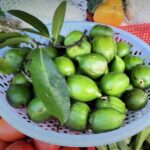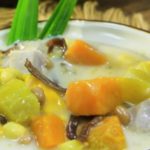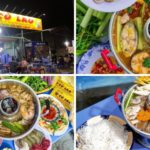Rat Meat – A Shocking Delicacy That Has Model Ngoc Trinh Addicted Since Childhood
The very mention of rat meat is enough to make many city dwellers squeamish, but in the flooded lands of Dong Thap Muoi, it is a famous delicacy. For the people of the Mekong Delta, rat meat is a unique delicacy that has long been a part of family meals, appearing in local pubs and gradually making its way into the menus of Western specialty restaurants.
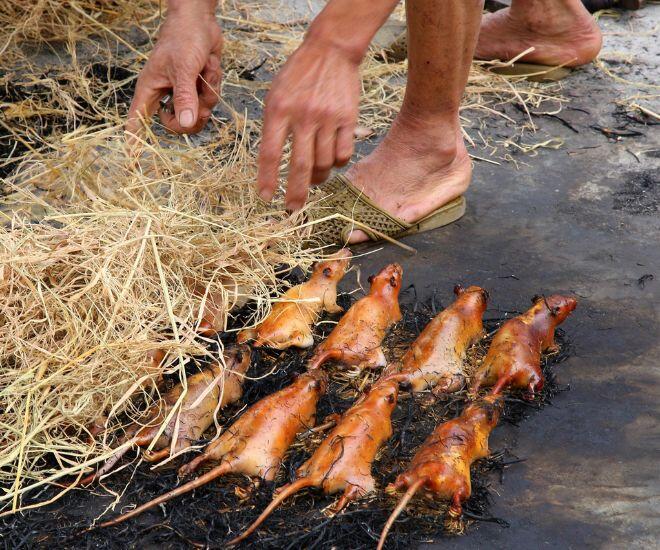
Contrary to the preconception of rodents being dirty, Mekong rats only eat rice, corn, cassava, and various sprouts, so they are considered “clean” and even delicious and fatty. They are available all year round, but they are at their best during the flood season or right after the harvest – the ideal time for locals to trap rats for cooking.
One of the famous people who has publicly expressed her love for this dish is model Ngoc Trinh. She did not hesitate to share: “I have been eating rat meat since I was very young and have been addicted to it ever since. I don’t understand why everyone is so scared? If you try it once, I think you’ll get addicted like me because it’s so delicious and sweet…” For her, rat meat is a dish associated with childhood memories, to the extent that she often serves it to her friends when given the opportunity.

Mekong rat meat is prepared in a variety of ways: stir-fried rat, grilled rat with soy sauce, braised in coconut milk, boiled with lemon leaves, pan-fried, fried with garlic and chili… However, the most popular and common dish is still grilled rat (also known as rat roast).
To ensure the dish is perfectly cooked, people choose healthy rats weighing between 300-400 grams. After careful preparation, cleaning, and deodorizing with salt water or alcohol, the rat meat is marinated with lemongrass, garlic, chili, fish sauce, five-spice powder, and sate to create a fragrant flavor. The rats are then skewered and placed in a closed clay pot, turned over every 10 minutes, and finally brushed with honey to create a crispy, glossy, and attractive crust.
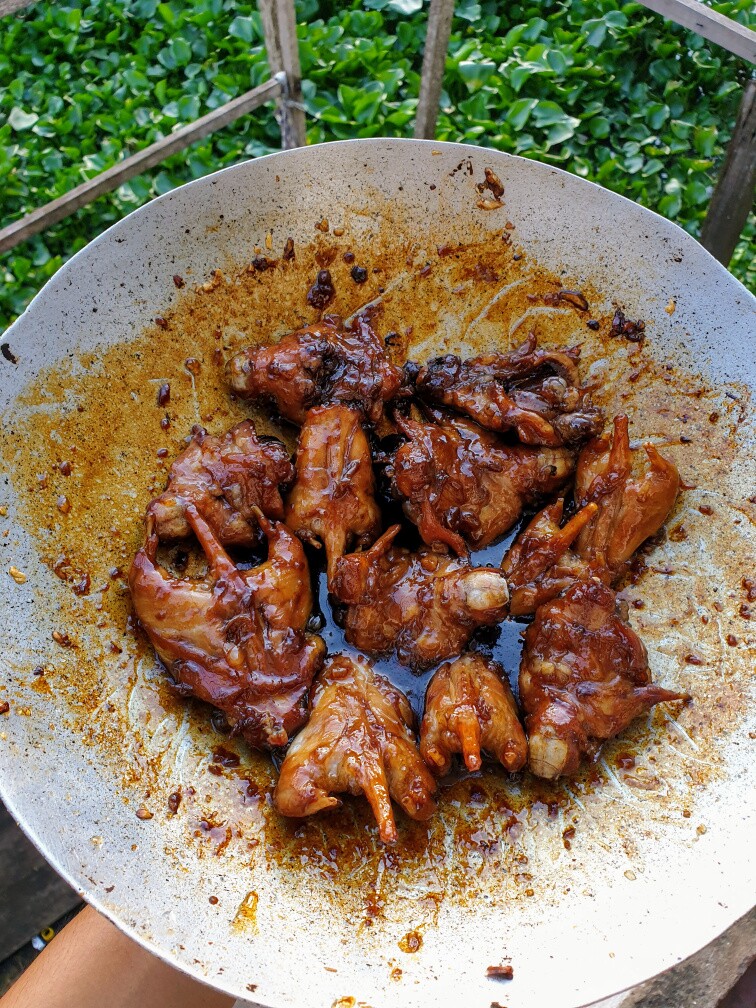
When cooked, the dish emits a mouthwatering aroma, with crispy skin and tender, sweet, and fatty meat. Diners can dip the meat in chili salt and enjoy it with herbs, sour bananas, tomatoes, and cucumbers, creating a harmonious blend of rustic and unforgettable flavors.
Although rat meat still elicits controversy and hesitation from most first-time diners, many brave souls who have tried it have been captivated by its sweet and tender flavor, likened to “roasted suckling pig of the fields.” As a result, rat meat is becoming increasingly popular, appearing in many Western restaurants and contributing to the promotion of unique local cuisine.
Coconut Worm – A Nightmare for the Faint-Hearted, a Heavenly Delicacy for the Mekong People
While rat meat makes people squeamish due to preconceptions, coconut worms can leave those with a weak heart speechless at first sight. The sight of white, finger-sized worms wriggling in a bowl of spicy fish sauce is likely to be a “shocking” image for those who see it for the first time.
Coconut worms are the larvae of a species of bug that lives inside coconut trees, where they bore and destroy the tops, causing the trees to wither. When the coconut tree dies, the coconut worms reach their fattest stage – and this is when the locals cut down the tree to harvest this “heavenly delicacy.”
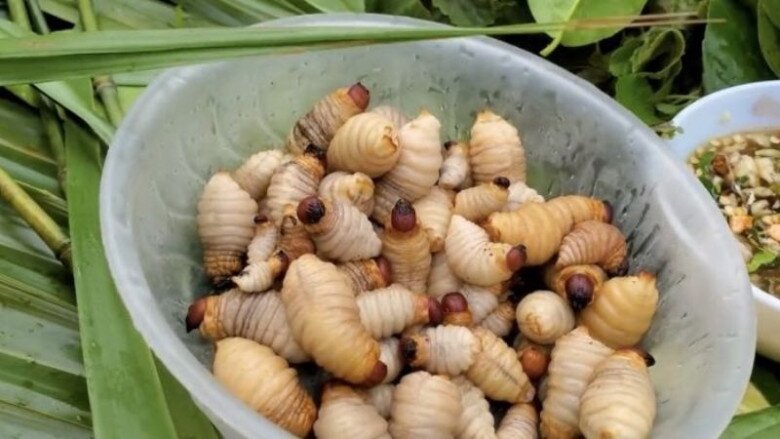
In the Mekong Delta, especially in Ben Tre – the capital of coconut forests – coconut worms are not only popular but also considered a precious delicacy, only available during certain seasons. Therefore, dishes made from coconut worms not only arouse curiosity but are also classified as rare specialties.
Coconut worms can be prepared in various ways: butter-fried coconut worms with a fragrant and fatty taste; grilled coconut worms with fresh herbs and a spicy, sour dip; or the more elaborate coconut worm steamed sticky rice – a unique combination of the fatty flavor of the worms and the sticky, fragrant texture of the rice.
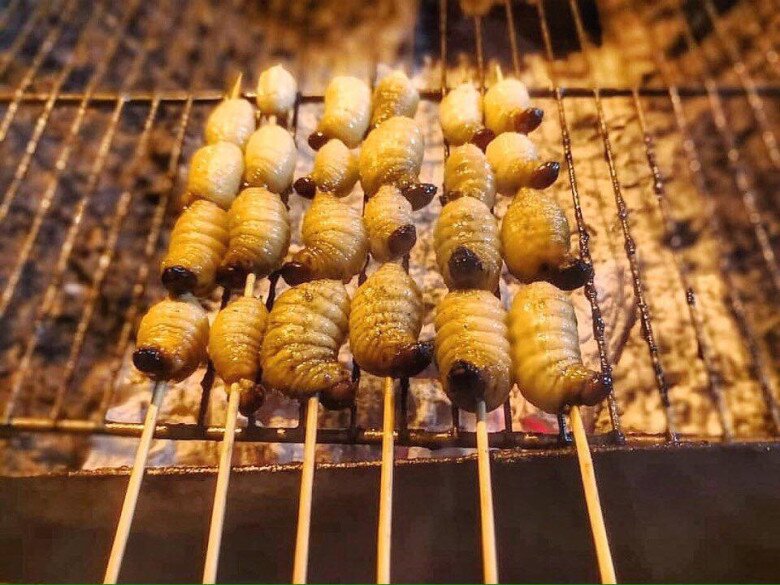
However, the most special and controversial dish is still raw coconut worms dipped in spicy fish sauce. To clean the worms, they are soaked in white wine to expel impurities, then rinsed and placed in a bowl of spicy fish sauce. The fatty worms, still wriggling, are picked up with chopsticks and eaten directly – a way of consumption that can be “shocking” to many. But for those accustomed to it, it is a way to fully appreciate the fatty, melting flavor of this delicacy, reminiscent of egg yolk.
Moreover, the Mekong locals differentiate between various types of worms: in addition to coconut worms, there are also “dung dinh dinh” worms (found in “dung dinh dinh” trees) and “dua chan la” worms. According to folk experience, “dung dinh dinh” worms taste best when cooked into porridge, while “dua chan la” worms, when grilled, emit a distinctive and irresistible aroma.
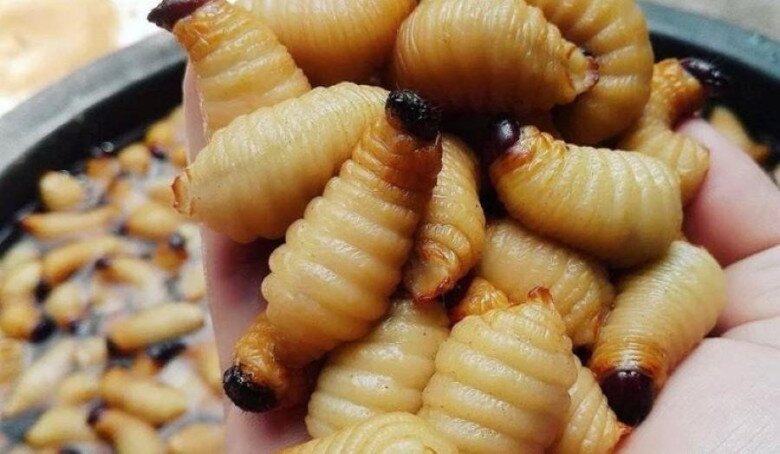
Despite being classified as “horrifying” dishes by outsiders, rat meat and coconut worms remain an integral part of the Mekong Delta’s culinary culture. Behind the hesitation lies a story of origin, lifestyle, natural conditions, and the pride of the locals in what nature has bestowed upon them.
Cuisine is not just about eating – it is also about the land, memories, and traditions. And sometimes, it is these “acquired taste” dishes that best showcase the unique character and identity of a culture.
“The Hidden Gem of An Giang: A Breathtaking Creek in the Heart of the Forest”
Nestled in the Tịnh Biên district, this enchanting stream attracts tourists during the 5th to 7th lunar months annually. Its pristine beauty, majestic grandeur, and enigmatic charm create a unique and captivating experience, making it a must-visit destination for those seeking an adventure off the beaten path.
Steal the Secret to Making “Che Keim”, the Delectable Dessert of the Mekong Delta
Introducing the ultimate guide to making Che Kiesu, the beloved Vietnamese dessert that has captured the hearts of many. With our easy-to-follow recipe, you can now recreate this mouthwatering treat in the comfort of your own home. Impress your family and friends with your culinary skills and transport them to the vibrant lands of Vietnam with every bite. Get ready to indulge in a burst of flavors and immerse yourself in a truly unforgettable culinary experience.
Captivate Your Taste Buds with the Delights of Western Vietnam: 5 Must-Visit Eateries in Ho Chi Minh City
Are you on the hunt for an authentic Western culinary experience that will tantalize your taste buds and leave you craving more? Look no further! We’ve compiled a list of the top 5 eateries in Saigon that are sure to satisfy your cravings. From mouth-watering dishes to an ambiance that captures the essence of Western culture, these hotspots are a must-try for any food enthusiast. Save these destinations and get ready for a gastronomic journey like no other!
Delicious Delights of Bac Lieu: Top 15 Local Specialties to Savour and Gift
Bạc Liêu is renowned for its delectable delights, offering a unique culinary experience for travelers to indulge in and take home as souvenirs. Uncover the 15 most tantalizing specialties that define the region’s culinary landscape, enticing food enthusiasts to embark on a flavorful journey of discovery and indulgence.


























